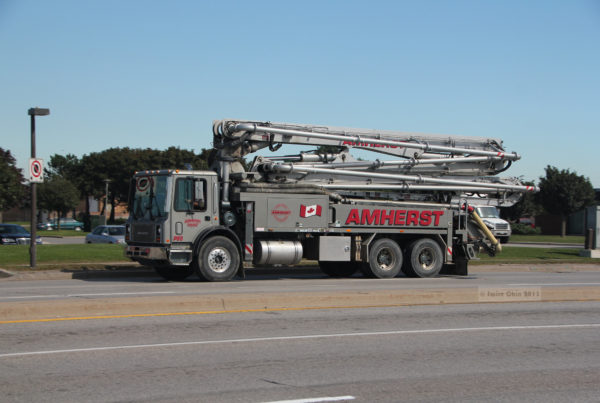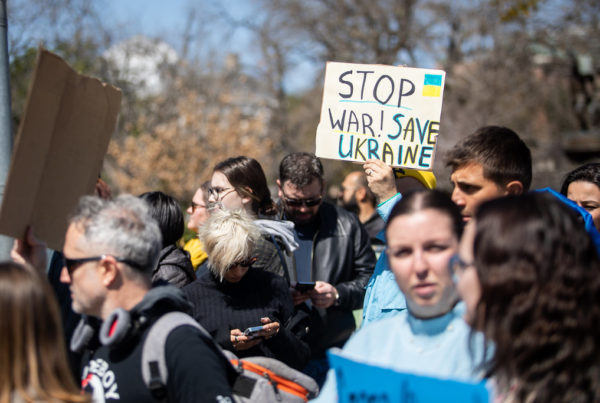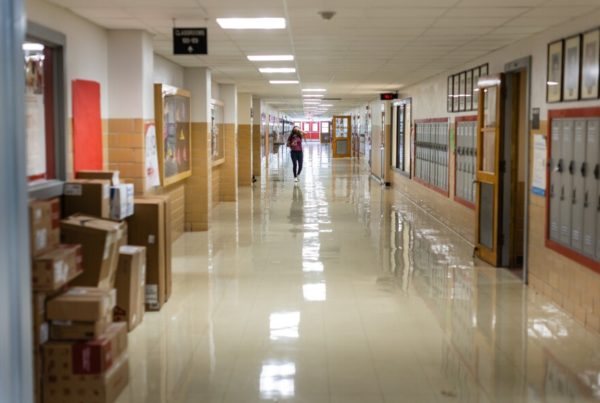Truckers in Mexico began a blockade at the Pharr-Reynosa International Bridge on Monday, halting traffic and the flow of goods at one of the U.S.-Mexico border’s busiest ports of entry.
The blockade is a response to Texas Gov. Greg Abbott’s order for state troopers to search commercial vehicles that enter the U.S. through Texas, in order to slow the flow of drugs and unauthorized migrants entering the country.
Noi Mahoney, a Texas-based reporter for FreightWaves, spoke to Texas Standard about the blockade and its economic impact. Listen to the full interview in the audio player above.
This interview has been edited lightly for clarity.
Texas Standard: How are you describing it – as a kind of a blockade style protest? Was it south of the border? Could you say a little bit more?
Noi Mahoney: It is south of the border and you have these truck drivers in Mexico who depend on commercial trade with the United States to make their living. And they, from what I understand, are protesting these long lines that are causing them to have to sit in their trucks for up to eight to 10 hours with limited food and water and no access to bathroom facilities. So it’s really a tough situation for the drivers.
What is it that they were trying to do? Just sort of shut down the border crossing altogether or what?
I believe so. in Mexico, they have a culture of protest and oftentimes when they want to be heard, they’ll do things such as this – blockade highways or bridges so they can get their message across. And so the Pharr-Reynosa Bridge has been a target of blockades before. About a year or so ago, Mexican farmers blocked the bridge, protesting certain government subsidies that were cut from the Mexican government. So this is not unusual. But what is unusual is they blocked both northbound and southbound traffic. That means no trucks are coming north or coming south. So all goods are being cut off from the United States
And this is still going on? Is that your understanding?
That is my understanding – that it’s going on at the Pharr-Reynosa International Bridge. And it’s also occurring now in El Paso, Texas, which is another key trade bridge for, the U.S.-Mexico border.
What specifically that Governor Abbott trying to do by slowing down traffic with these checkpoints at the border.
According to his announcement last Wednesday, when he came out with a press conference, this is part of his initiative to slow illegal migrants getting across the border. Migrants are getting across the border, according to him, on a lot of commercial vehicles, and so he’s set up these checkpoints run by the Texas Department of Public Safety to check commercial vehicles for migrants trying to get across
How much have these protocols been slowing things down?
I would describe it as chaotic at this point, and it’s getting worse by the hour. When he made the announcement last Wednesday, I knew it was going to be bad, but I didn’t think it was going to get this bad this quickly for commercial trucking and for the border trade community. If it goes on for weeks or months, I would describe the situation as a disaster for trade and, for the Texas economy and for the U.S. economy.
The longer goods wait to be transported across the border, it adds cost to that good, whatever it is, whether it’s fruits and vegetables, whether it’s cars or auto parts, and the end users, the consumers, end up paying more money at the supermarket or retail stores eventually.
Do you anticipate truckers coming into the U.S. from Mexico, perhaps trying to route themselves away from Texas and try to cross elsewhere?
I would say that’s not feasible because Texas has three of the busiest biggest ports of entry along the U.S.-Mexico border. That’s El Paso, Laredo, and Pharr-Reynosa International Bridge. And the only other major. U.S.-Mexico port of entry is, Otay Mesa down in Southern California. And there’s no way they’re going to drive to the tip of Southern California. So Texas is their only real option to get across, the border and now bring goods into Texas and into the United States.
Do you foresee any end to this? Is there a light at the end of the tunnel from what you’ve been hearing from drivers or from officials?
No, not at the moment. It seems that, these checkpoints are going to continue, at least for the foreseeable future. And the longer this goes on, as I said before, it’s going to, it’s going to really hurt the trade community. It’s going to really hurt, the economies of both both countries because Mexico is very dependent on, trade with the U.S. and, the Mexican trucking industry is just as big as the trucking industry here in the United States.















